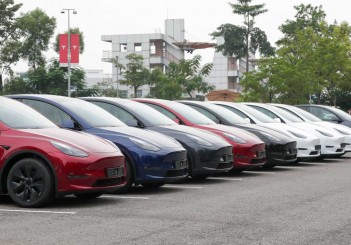GOTHENBURG: Volvo Cars is for the first time making its safety knowledge easily accessible in a central digital library which it urges the car industry to use, in the interest of safer roads for all.
The announcement signals the company’s philosophy of boosting safety through sharing knowledge that helps saving lives and comes on the 60-year anniversary of what may have been the most important invention in the history of automotive safety, the three-point safety belt.
Introduced by Volvo in 1959, the three-point safety belt is estimated to have saved over one million lives globally, not just in Volvos but in numerous other cars, thanks to its decision to share the invention in the interest of improving traffic safety.
To celebrate this milestone and to underline that its sharing tradition goes beyond patents and physical products, Volvo Cars now launches Project E.V.A. The initiative embodies and celebrates 60 years worth of sharing research into car safety with the world, but also highlights a fundamental issue with inequality in terms of car safety development.
“We have data on tens of thousands of real-life accidents, to help ensure our cars are as safe as they can be for what happens in real traffic,” says Lotta Jakobsson, professor and senior technical specialist at Volvo Cars Safety Centre. “This means our cars are developed with the aim to protect all people, regardless of gender, height, shape or weight, beyond the ‘average person’ represented by crash test dummies.”
Project E.V.A. illustrates, based on Volvo Cars’ own research data as well as several other studies, that women are more at risk for some injuries in a car crash. Differences in for example anatomy and neck strength between the average man and woman mean that women are more likely to suffer from whiplash injuries.
Based on those studies and its own crash data, Volvo Cars created virtual crash test dummies to better understand these accidents and develop safety technologies that helps to protect both men and women in an equal way. The first resulting technology was WHIPS whiplash protection introduced in 1998 that has contributed to the unique look of Volvo’s seats and head restraints.
Over the years, Volvo has done research on side impacts and lower back injuries in accidents. In the latter, Volvo's findings led it to develop an energy absorber in the seats, first seen on the XC90 and now on all SPA-based cars.










